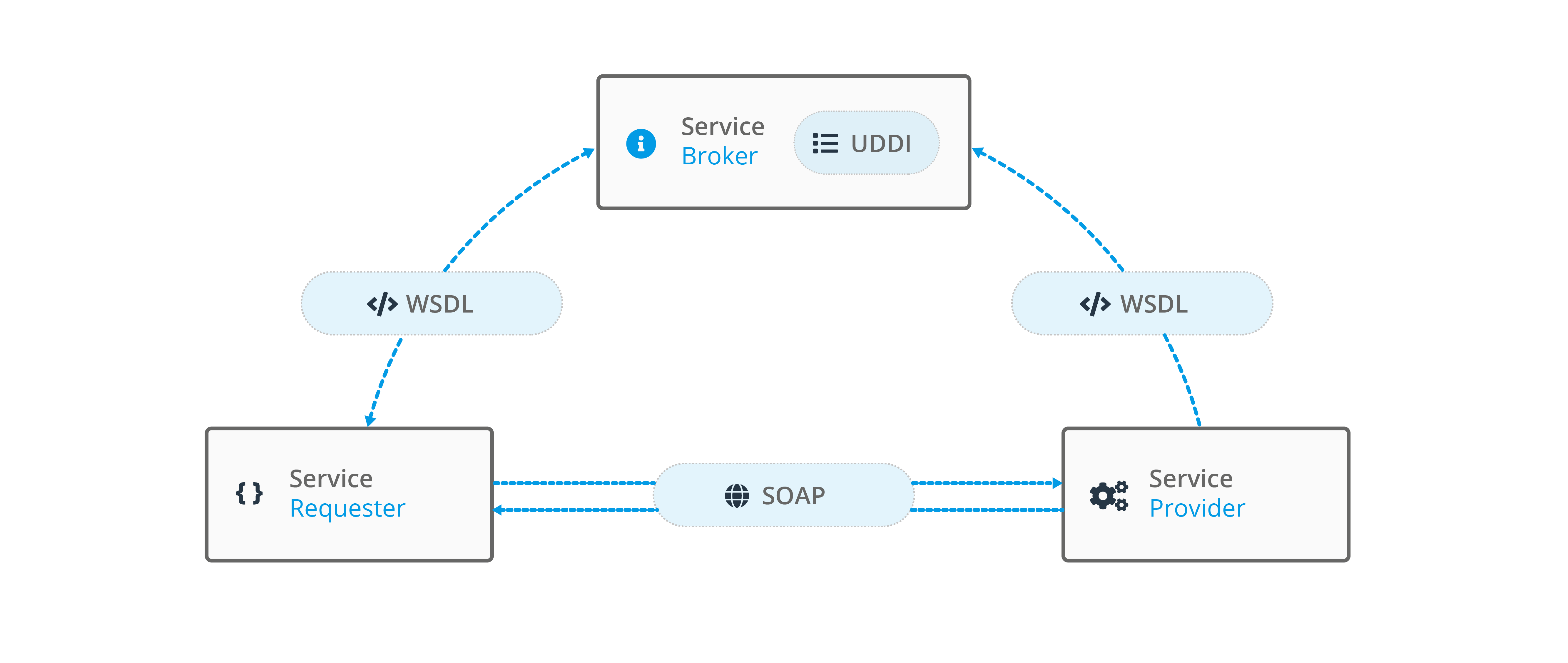What is SOAP API? #
SOAP stands for Simple Object Access Protocol, and is a type of application programming interface (API) that enables applications to talk together.
In order for APIs to work they need to conform to a particular protocol – the rules that guide what the API can share and how it achieves it. One of the most widely used protocols for accessing applications and web services is SOAP API. The other is REST API – although this is more of an architectural style rather than a protocol.
SOAP was the original protocol developed by Microsoft to enable developers to access web services.
It sends HTTP (Hypertext Transfer Protocol) requests to an application’s endpoints to expose web services and create, access and manipulate resources – which can include query results, records, metadata etc.
When the data is transmitted over the web it needs to be structured and SOAP only supports the XML data format.
XML (Extensible Markup Language) is a text format (message) containing codes or tags that describe the digital document being sent over the internet, including how it should be structured, stored and transported. It is similar to HTML which is used by web pages.
How does SOAP API work? #
First, the client sends a SOAP request message to the server. The server processes the request and sends back a SOAP response message to the client.
Both the request and response messages are wrapped in a SOAP envelope, which contains a body that holds the actual data being exchanged between the client and server, such as the encoding and the version of SOAP being used.
The body can be composed of one or more SOAP elements, each of which represents a specific type of data. The SOAP envelope can also include optional headers that provide additional information about the message or authentication details.
The client receives the SOAP response message, parses it, and extracts the relevant data. The client then processes the data as needed, for example, displaying it to the user or using it to perform further processes.

What are the benefits of SOAP API? #
SOAP API is a robust and widely used protocol for building web services that require security, reliability, and interoperability. Here are some of the benefits of SOAP API:
- Interoperability: SOAP API provides a standardised way of communication between different systems and platforms, regardless of the programming language or operating system used. This makes it easier to integrate different systems and data sources.
- Security: SOAP API provides a wide range of security features including message integrity, confidentiality, and authentication. These security measures make SOAP API suitable for handling sensitive data such as financial transactions and healthcare information.
- Reliable messaging: SOAP API uses a messaging system that ensures reliable and guaranteed message delivery. It provides built-in error handling and retry mechanisms to ensure that messages are delivered without loss or corruption.
- Customisation: SOAP API can be customised to meet specific needs. It provides support for adding custom headers and extensions to the SOAP message.
- Tools: SOAP API has a mature set of tools for generating client and server code, as well as for testing and debugging. Many programming languages and development environments have built-in support for SOAP API.
Related SOAP API terms #
What is HTTP? #
HTTP (Hypertext Transfer Protocol) is an application-layer protocol for transmitting text, images, sound and video files between web browsers and web servers. The process can then return the resources in a format that the receiving application can interpret, which is achieved by using the XML data format.
What is XML? #
XML (Extensible Markup Language) is a text format containing codes or tags that describe the digital document being sent over the internet, including how it should be structured, stored and transported. It is similar to HTML which is used by web pages.